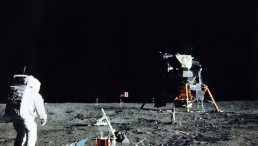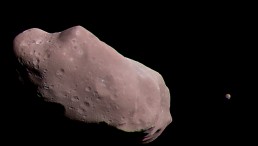New study reveals that the exoplanet WASP-76b, which scientists assumed had a surface temperature of 4,400°F.
Cornell University researchers discovered ionized calcium in the planet's atmosphere. That implies that the exoplanet has a hotter temperature than previously thought.
The researchers do not comment on the precise temperature of the planet in their results. Still, they said their conclusions are based on high-resolution spectra obtained from the Gemini North telescope at the top of Mauna Kea in Hawaii.
WASP-76b Makes Too Much Calcium, Hence The Iron Rain
According to Space.com, the planet is tidally locked, which means it always faces the same direction as its star.
Hence, the exoplanet heats up to the point that metal vaporizes, tearing molecules apart into atoms.
Emily Deibert, the study's main author, said in a statement that the team is seeing a lot of calcium. She went on to say that it's a compelling feature.
This spectral signature of ionized calcium, according to Deibert, might suggest that the exoplanet possesses very powerful upper atmospheric winds.
Or the exoplanet's atmosphere temperature is far higher than scientists expected.

This comic-book-style illustration by Swiss graphic novelist Frederik Peeters shows a close-up view of the evening border of the exoplanet WASP-76b. The ultra-hot giant exoplanet has a day side where temperatures climb above 2400 degrees Celsius, high enough to vaporise metals. Strong winds carry iron vapour to the cooler night side where it condenses into iron droplets.
WASP-76b (found in 2016) has a daytime temperature that exceeds the previously believed 4,400°F, while its nighttime temperature is substantially lower. The temperature on that side is thought to be a chilly 1,800°F, making it a planet of two extremes.
WASP-76 b has a radius of 1.83 times that of Jupiter, while having a mass of just 92 percent that of Jupiter.
Although the researchers do not provide an updated temperature, they point out that the Milky Way galaxy is an incredibly varied region in space, with planets of various kinds.
Astronomers Baffled As To Why Exoplanets Create Too Much Calcium
Researchers had already studied ionized calcium on two additional giant, hot exoplanets: KELT-9b and WASP-33b. CNet said the calcium signal they were detecting didn't line up with the models of these superhot Jupiters, implying that an unknown process is delivering calcium higher into the atmosphere. The current study supports earlier research and might aid astronomers in their studies of atmospheric gas and element escape to space, which occurs much more quickly when you're close to your host star and hot enough to melt iron.
The findings are part of the ExoGemS investigation of exoplanet atmospheres, which uses the Hawaiian Gemini observatory. The initiative will use the similar method to other exoplanets to better account for their variety, with WASP-76b's peculiar calcium guiding the next round of exoplanet studies.
Researchers Attribute Latest Discovery To Modern Telescope
Study co-author Ray Jayawardhana said in a SciTechDaily report that the researchers understood the true diversity of exoplanets as they conducted studies. He added that they had seen several planets from those hot enough to support iron rain to those with more temperate climates, from those heftier than Jupiter to those not much larger than the Earth.
Jayawardhana added that they can now learn so much about the atmospheres of planets orbiting stars hundreds of light-years away with modern telescopes and sensors.
Resarchers published their study, titled "Detection of Ionized Calcium in the Atmosphere of the Ultra-hot Jupiter WASP-76b," in the Astrophysical Journal Letters.
RELATED ARTICLE: Planet 9: Is Its Existence in the Solar System True or Is It Just an Illusion? Here's What Studies Say
Check out more news and information on Space in Science Times.














